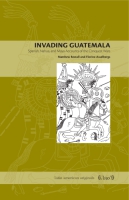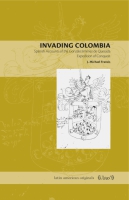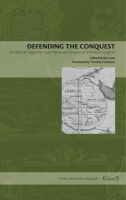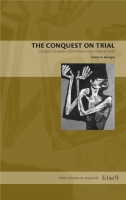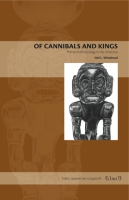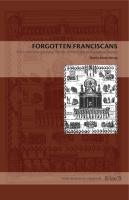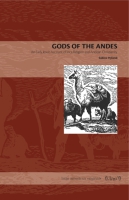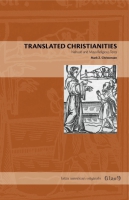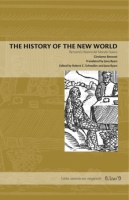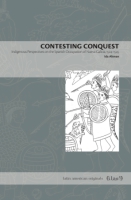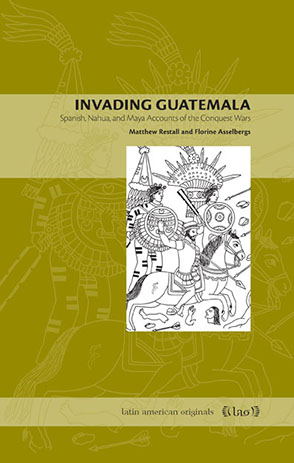
Invading Guatemala
Spanish, Nahua, and Maya Accounts of the Conquest Wars
Matthew Restall and Florine Asselbergs
Invading Guatemala
Spanish, Nahua, and Maya Accounts of the Conquest Wars
Matthew Restall and Florine Asselbergs
“[In] the second volume in the Latin American Originals series from Pennsylvania State University Press, Invading Guatemala: Spanish, Nahua, and Maya Accounts of the Conquest Wars, . . . Matthew Restall, well known for having laid to rest a number of misconceptions about the wars of conquest in his book Seven Myths of the Spanish Conquest, joins forces with Florine Asselbergs to demolish the generally accepted vision of the conquest of Guatemala. The vivid picture that emerges is a much more complex, prolonged and tragic affair than traditional historiography would have us believe.”
- Description
- Reviews
- Bio
- Table of Contents
- Sample Chapters
- Subjects
Alvarado’s letters to Cortés, published here in English for the first time in almost a century, are supplemented with accounts by one of his cousins, by his brother Jorge, and by Bernal Díaz and Bartolomé de Las Casas. Nahua perspectives are presented in the form of pictorial evidence, along with written testimony by Tlaxcalan and Aztec veterans who fought as invading allies of the Spaniards; their claim to have done most of the fighting emerges as a powerful argument. The views of the invaded are represented by Kaqchikel and Tz’utujil accounts. Together, these sources reveal a fascinating multiplicity of perspectives and show how the conquest wars of the 1520s were a profoundly brutal moment in the history of the Americas.
“[In] the second volume in the Latin American Originals series from Pennsylvania State University Press, Invading Guatemala: Spanish, Nahua, and Maya Accounts of the Conquest Wars, . . . Matthew Restall, well known for having laid to rest a number of misconceptions about the wars of conquest in his book Seven Myths of the Spanish Conquest, joins forces with Florine Asselbergs to demolish the generally accepted vision of the conquest of Guatemala. The vivid picture that emerges is a much more complex, prolonged and tragic affair than traditional historiography would have us believe.”
“This book is a great introduction as well as a scholarly contribution to conquest studies of the Americas.”
Matthew Restall is Sparks Professor of Latin American History at Penn State and the author of eight books on colonial Latin America, including Seven Myths of the Spanish Conquest.
Florine G. L. Asselbergs is an independent scholar in the Netherlands and the author of Conquered Conquistadors, a groundbreaking study of the Guatemalan conquest.
Contents
List of Maps and Figures
Foreword
Preface
1. The Invasions of Guatemala
2. Pedro de Alvarado’s Letters to Hernando Cortés, 1524
3. Other Spanish Accounts
4. Nahua Accounts
5. Maya Accounts
Bibliography
Index
1 The Invasions of Guatemala
In the autumn of 1509, the two rulers of the small Kaqchikel Maya kingdom that lay among the mountains of southern Guatemala “received the Yakis of Culhuacan, as guests.” Culhuacan is in the Valley of Mexico; these guests, whom we would call Aztecs, had come from their vast imperial capital of Tenochtitlan. As the Kaqchikels observed in their own chronicle of their kingdom’s history, “On [the day] 1 Toh the Yakis arrived, the ambassadors of the lord Moteksumatzin [Moctezuma], the lord of the Mexicas. And this we truly saw, when indeed the Yakis of Culhuacan arrived; there were many Yakis who arrived, long ago, my sons, while our grandfathers were ruling.”
All these Aztec (or, more properly, Mexica) visitors comprised a diplomatic and trading embassy. They were clearly designed to impress upon the Mayas the awesome power and reach of the Mexica emperor, perhaps as a prelude to an eventual incorporation into the empire—but the 1509 visitors were not an invasion force. Nor did one come in their wake. A decade passed, during which time the Mexica Empire continued its gradual expansion east toward the Maya kingdoms. This expansion was probably not of great concern to the Kaqchikel rulers, or to their neighbors, the K’iche’ Mayas. The frontier of Mexica control remained some distance from the Guatemalan highlands, buffered by several small city-states in between (see Map 1).
Furthermore, a busy trade route running from Tenochtitlan into the Guatemalan capital cities surely benefited the Maya elite and kept information flowing about the great empire to the west. Meanwhile, there were local distractions, especially as the K’iche’s and Kaqchikels continued periodically to wage war against each other.
But, had Maya rulers feared that one day the long-distance trade route would bring not merchants but tens of thousands of Mexica and other Nahua warriors, they could hardly have imagined the circumstances that would in fact bring such warriors into their lands in 1524. The K’iche’ and Kaqchikel lords were probably not nervous in 1519, when Moctezuma sent word of well-armed foreigners entering the Mexica Empire. And the Maya rulers may have sensed opportunity, rather than felt alarm, when in 1521 they learned of the destruction of Tenochtitlan by these new invaders. Nor were they likely to have made a connection between the arrival of the foreigners in Mexico and the epidemics of disease that swept through southern Guatemala in 1519 and 1520.
Still, the balance of power in central Mexico had clearly shifted dramatically in 1521. In response, both the K’iche’s and Kaqchikels sent ambassadors north to meet Hernando Cortés, the conqueror of the Mexica Empire. They met him in the Mexican town of Tuxpán in 1522 and—according to Cortés himself—“offered themselves as the subjects and vassals” of the Spanish king. The ambassadors returned to Guatemala with gifts and assurances from Cortés “that if they remained true to their promise they would be very well treated and honored by me and all my company” in the name of the Spanish monarch.
No native sources mention the Tuxpán meeting, so we can only guess at the intentions or actual statements made by the Maya ambassadors. But had their purpose truly and sincerely been to accept Spanish rule, the story might have ended there—or at least continued with a gradual and relatively uneventful incorporation of the Guatemalan highlands into the new empire (as happened to the smaller Chontal Maya kingdom to the north). But that is not what happened. Instead, the rest of the 1520s brought unprecedented levels of mortality and destruction to the highlands; the Mexicas and other Nahua warriors came after all, but as allies of the new invaders, whose repeated campaigns of conquest brought an end to the K’iche’, Kaqchikel, and neighboring kingdoms.
This book is about those invasions. The remainder of this intro-ductory chapter briefly describes who the invaded Maya peoples were, outlines the Spanish campaigns and introduces their Spanish leaders, and explains how Nahuas and other native communities came to participate so heavily in the invasion. The chapters that follow present the story in the words of Spaniards, Nahuas, and Mayas who lived in the sixteenth century—many of them eye-witness participants in the war.
The Mayas of Highland Guatemala
The K’iche’s and Kaqchikels were among the heirs to the most accomplished civilization developed by native peoples in the Americas. We call this civilization “Maya,” although the term would not have meant anything to Mayas in Guatemala (it was a Yucatec Maya word), and there was never a common sense of identity or political unity among all the various groups that we call Maya. At the time of the Spanish arrival, Maya civilization was thousands of years old. But although great cities and city-states had arisen and fallen in the past, there had never been a Maya empire, and in the sixteenth century Spaniards encountered only relatively small Maya kingdoms (none remotely as large as the Mexica Empire to the west).
In the thirteenth century elite warrior families in the southern Maya area (the region that is now highland Guatemala) had begun to consolidate control over networks of valleys, creating the K’iche’ and Kaqchikel states. These ruling families were probably local, although —like ruling dynasties throughout Mesoamerica—they claimed descent from the rulers of an ancient city (which may have been Tula or Teotihuacan in central Mexico, or Chichén Itzá in Yucatan, or more likely a mythical place inspired by these old cities). Whether real or legendary, the notion of invasion from the west by a new ruling elite was well established in highland Maya cultural traditions.
Early in the fifteenth century the K’iche’s founded a new capital of Utatlán and began to expand at the expense of their neighbors; in the words of the Popol Vuh (or Popol Wuj, the great K’iche’ book of history and culture), “the grandeur and power of the sons of the K’iche’ grew, when they built the town of the ravines out of stone and mortar.” The most aggressive of the K’iche’ kings was K’iqab’, who “made war on them, and certainly conquered the fields and towns of the people of Rabinal, the Kaqchikels, and the people of Zaculeu; he came and conquered all the towns, and the soldiers of K’iqab’ carried his arms to distant parts.”
Forging a small empire that stretched west across the highlands and south toward the coast of the Pacific Ocean, K’iqab’ led the K’iche’ kingdom to its zenith. But after K’iqab’s death in the 1470s, the Kaqchikels rebelled against their status as subordinate allies and successfully founded an independent kingdom to the southeast, centered on a new capital city called Iximche’. Repeated attempts to crush the revolt failed, and after the K’iche’s suffered a major defeat (with their kings captured and sacrificed), the balance of power in the highlands shifted permanently. In the decades before the Spanish-Nahua invasion, the Kaqchikels steadily expanded into the valleys previously dominated by the K’iche’s (with whom they continued to fight, defeating them again in 1510, 1514, and 1517, according to the Kaqchikel chronicle). Indeed, only the arrival of Pedro and Jorge de Alvarado halted Kaqchikel momentum.
The area conquered by the Alvarado brothers was home not only to the K’iche’s and Kaqchikels but also to other ethnic or ethnolinguistic groups. The major groups were the Tz’utujil Mayas in the area of Lake Atitlán, the Mams in the west, the Poqomams in the east, and the Pipils to the south. Various versions of the invaders’ encounter with the Tz’utujils and the Pipils are found in the accounts presented in Chapters 2–5. In the words of the K’iche’s, commenting on the destruction of Guatemala’s Maya kingdoms by the Spaniards and their allies, “they pushed aside all the settlements and fortified centers; the Rabinal center was brought down; the Cakchiquel, the Tuhaleb, the Cubulcaal, Cunen Cakquilah, Booh, the Choxanah Xhil people, the structures of the Tzitzol,” none was spared.
Pedro de Alvarado’s Invasion, 1524–1526
In view of the history of K’iche’-Kaqchikel relations in the half-century before the Spaniards landed in Mexico, it seems unlikely that Cortés’s account of the embassies sent to him by both Maya king-doms in 1522 tells the full or real story. Sixteenth-century Spaniards (and historians of later centuries) liked to imagine that native rulers were amazed and overawed by a technologically and culturally superior invader, but there is no evidence that K’iche’ and Kaqchikel leaders were in any way surprised or stunned into inaction. On the contrary, they were quick to take the political initiative and adopt multiple diplomatic and military strategies. The Maya envoys may indeed have sworn loyalty to the Spanish king in 1522, but this embassy of apparent capitulation was surely a cover for a fact-finding mission; the Mayas must have been keen to learn as much as they could about the Spaniards and their leader, and also to explore the possibility of an alliance that might allow them to defeat their high-land rivals once and for all.
Indeed, a follow-up embassy sent west by the Kaqchikels confirms this theory. This second embassy reached Soconusco in 1523, where the Maya envoys met not with Cortés but with another Spaniard, Pedro de Alvarado. This Kaqchikel embassy was larger than the first, bringing with it gifts of gold, cacao, clothing, and other provisions, as well as a number of slaves (probably far fewer than the five thousand that one Spanish account claimed). We can only speculate as to Kaqchikel motives; were they hoping to buy off the Spaniards and persuade them not to come to Guatemala, or did they aim to consolidate an anti-K’iche’ alliance?
If their goal was to stop a Spanish visit, the effect of their second embassy was the opposite. Cortés had sent Pedro de Alvarado down to Soconusco “to learn the truth” about reports of Kaqchikels harassing locals in Soconusco and Chiapas “because they are our allies.” Alvarado seems to have read the mission in grander terms, however, persuading Cortés to support his plans for a full-scale conquest expedition into Guatemala. Alvarado had played a prominent role as one of the Spanish captains who had invaded Mexico in 1519 and destroyed the Mexica Empire. He had already acquired a reputation as a cruel and ambitious conquistador (later rendered almost as a caricature by Las Casas; see Chapter 3 below); he now headed into Guatemala armed with an adelantado license, a royal permit to invade, conquer, settle—and then claim the governor-ship of the new province.
Alvarado left Mexico City on December 6, 1523. His force had taken a while to assemble; it was not huge, but substantial by the standards of the day—although its Spaniards were by far a minority within the entire expedition. Like all conquistadors in the great age of Spanish assaults on native America (the 1490s to the 1550s), Pedro referred to his forces as a compañía, “company,” and to its Spanish members as compañeros, “companions” or “comrades”—or even “partners,” as all were in a sense partners in a business venture, in which they had invested their lives and property, standing to lose or gain everything.
Conquest companies were often family affairs (Francisco Pizarro took three of his four brothers with him when he invaded the Inca Empire), and the Alvarado company was no exception; Pedro’s comrades included his three brothers and three cousins. One of the Alvarado brothers, Jorge, was later to play an even more important role in the conquest of Guatemala than was Pedro, as we shall see. There were eight captains, consisting of Pedro himself (the senior captain), his six relatives, and don Pedro Portocarrero (mentioned in the second letter in Chapter 2). Cortés and Bernal Díaz both wrote that there were three hundred Spaniards on foot, and another 120 (Cortés’s account) or 135 (Díaz’s version) on horseback. However, Pedro’s own letters suggest that there were fewer, perhaps as few as 250 Spanish compañeros in all—a hundred of them with horses, the rest on foot. A Nahua warrior from Tlaxcala who participated in the invasion later claimed that there were only two hundred Spaniards. This would have been more than the Pizarro company that invaded Peru, but roughly the same size as Cortés’s original Spanish invasion force in Mexico, and considerably smaller than many later companies—such as the one led into Colombia in the 1530s.
As was the case with most companies of the era, especially from the 1510s on, Spaniards did not fight alone or unassisted. They were accompanied by armed African slaves and freemen, who were seldom mentioned in Spanish accounts; we do not know how many fought in Guatemala in 1524, but there were probably dozens. Spanish and black conquistadors alike were greatly outnumbered by native allies or, as Alvarado often calls them, Indios amigos nuestros (our friendly Indians). Pedro’s pregnant Nahua wife, doña Luisa Xicotencatl (from Tlaxcala’s royal family), also came with him, but she was hardly the only Nahuatl speaker; the bulk of Alvarado’s forces were Nahuas from central Mexico—at least three thousand of them. Nahua survivors testified that in addition to the thousands of Mexica, Tlaxcalan, Xochimilcan, and other Nahua warriors fighting with the Spaniards, Alvarado also picked up thousands of other native soldiers—such as Mixtecs and Zapotecs in the Oaxaca region —as he traveled south toward Guatemala.
The expedition reached Tehuantepec in January 1524 (from which Alvarado wrote to Cortés), and shortly afterward entered Soconusco (where he wrote again; both of these early letters are long lost). Thus far Alvarado had been in territory that had mostly been under Mexica sway and in 1524 was now loosely under Spanish control, but at the Samalá River (in what is today western Guatemala) the company reached the K’iche’ frontier. As described by Alvarado, Bernal Díaz, and other accounts presented in this book, it was here that K’iche’ warriors made the first of a series of fierce defensive stands. But the combination of steel swords, horses (when an open plain could be found), and thousands of native allies allowed the invaders to press on again and again. Having crossed the Samalá, Alvarado led his force over the mountain pass, only to find a K’iche’ army awaiting the invaders.
The ensuing battle was a crucial one (sometimes called the Battle of El Pinar), as it permitted the Spaniards to use their horses to rout the K’iche’s, who were subjected to further slaughter at the hands of the Spaniards and Nahuas on foot. Alvarado claims that at one point during the fighting, “I saw more than thirty thousand men coming toward us.” This was surely an exaggeration, as the entire K’iche’ population may have been reduced by disease to as low as sixty thousand by this time, but it suggests that the K’iche’s committed to the clash most if not all of the kingdom’s fighting men—only to see thousands slain. Among the dead was the highest-ranking K’iche’ warrior, whom Alvarado calls “the Captain General of the whole country.” No Spanish or Kaqchikel source names this general, and only K’iche’ sources from later in the colonial period state that he was called Tecún Umán. But although Tecún Umán may be more legendary than real, he has become one of modern Guatemala’s most potent icons (claimed both by the Guatemalan military and by Maya leaders in the recent civil war).
Whether mythical or myth-historical, Tecún Umán represents the tenacious resistance of the K’iche’s to Alvarado’s invasion. Following El Pinar, the Spanish-Nahua company moved on to the Quetzaltenango valley, where the K’iche’s again made a stand (fielding twelve thousand men, according to Alvarado). Defeated again, the surviving K’iche’ leadership pretended to beg for peace, inviting the Spaniards into their capital of Utatlán (see Map 1; for Alvarado’s route, see Map 2 in the next chapter). Sensing a trap, the adelantado seized the two K’iche’ kings, burned them alive, and then destroyed the city. In Pedro de Alvarado’s own account, this was an unfortunate but necessary tactic, a perspective more or less shared by his brother Jorge and Bernal Díaz; on the other hand, in the accounts by Las Casas and by the K’iche’s’ old enemies, the Kaqchikels, Alvarado’s actions were gratuitously violent. Accounts by the K’iche’s themselves are silent on the matter.
On April 11, 1524, amid the smoldering ruins of the captured K’iche’ capital of Utatlán, Pedro again wrote to Cortés (the first letter presented in Chapter 2 below). Around this time, Alvarado’s half-Tlaxcalan daughter was born, named doña Leonor after his mother. Meanwhile, the Kaqchikels chose this moment to pursue further their policy of appeasement and alliance with the Spaniards, sending warriors to reinforce the invading army (four thousand according to Alvarado, four hundred according to the Kaqchikel chronicle). This, in retrospect, was the high point of the campaign: one kingdom defeated and occupied; the other confirmed as an ally; baby doña Leonor a symbol of rebirth of the new province of New Spain that would rise from the ashes of the K’iche’ kingdom.
But Alvarado did not stay long in Utatlán. The Kaqchikels must have hoped, with their gift of warriors, to manipulate Alvarado into destroying all their enemies—and this they managed to do. First, the combined Spanish-Nahua-Kaqchikel force spent a week consolidating the elimination of K’iche’ resistance, sweeping through the kingdom’s valleys, killing or enslaving villagers. They then descended on Lake Atitlán, shattering the Tz’utujil Maya army and further extending Alvarado’s violent reach into the highlands. Alvarado was now employing the stepping-stone technique that the Spaniards had been using in Mexico for five years (borrowed in part from the Mexicas, who had used it to build their empire over the course of the previous century).
But instead of consolidating his control over the highlands, Alvarado led his expanding force to the south and east (the company must by now have included thousands of native warriors speaking half a dozen or more languages). Encountering various Maya and Nahuatl-speaking groups, most notably the Pipils, Alvarado went as far as the Pacific coast and down into what is now El Salvador.
Alvarado’s own account of the journey into El Salvador and back sufficiently conveys its limited accomplishments. By July Pedro was back in the highlands. He now chose the Kaqchikel capital of Iximche’ as the capital of the new colony. He renamed it Santiago, and there, on July 28, he wrote his fourth letter to Cortés (the second letter presented in Chapter 2). Although on one level the letters were personal messages to a friend and patron, they were also intended to promote and justify Alvarado’s actions to a larger audience (including, he hoped, the king). The rapid publication of letters to patrons and monarchs by the likes of Columbus and Cortés meant that Alvarado might even have imagined the possibility of his letters seeing print—and indeed, in October 1525, just fifteen months after Alvarado’s last letter was written, the two surviving letters were published in Toledo.
Despite the optimistic tone of many passages in the letters of 1524, a bitterness creeps in at the end of the second letter. Alvarado’s ambition was to see Santiago rise from Iximche’ just as Spanish Mexico had begun to rise from Tenochtitlan, with the Kaqchikels harnessed to the machine of Spanish empire building just as the Mexicas, Tlaxcalans, and other Nahuas were. But such hopes were soon dashed, largely as a result of Alvarado’s own impatience, frustration, and impulsive violence. Alvarado’s energetic six-month campaign of 1524 had left him in tenuous control of small pockets of the Guatemalan highlands—and yet this was achieved through a level of violence and brutality that was excessive even for a Spanish conquistador. As the Kaqchikels’ own chronicle recounts (see Chapter 5), Alvarado’s demands for tribute, supplies, and labor— symbolized by the endless Spanish quest for gold—undermined the Spanish-Kaqchikel alliance. The subsequent revolt drove the Spanish out of Iximche’, which Alvarado then destroyed in a violent campaign against the Kaqchikels reminiscent of his earlier war on the K’iche’s. The six years of almost continuous warfare that ensued (1524–30) have gone down in history as the “Kaqchikel rebellion.”
Later in 1524, when Pedro set out for Chiapas (hoping to meet Cortés there), he left control—or, more accurately, “control”—of highland Guatemala in the hands of his brother Jorge. For with many Spaniards killed or on their way back to Mexico, there were only a handful of them left. Nervously awaiting reinforcements, the remaining Spaniards depended completely on the loyalty of their native allies. When Pedro de Alvarado departed for Spain in 1526, he left behind devastated Maya kingdoms, ongoing hostilities, and the mere semblance of a new colony. In short, the invasion was a failure.
Yet Pedro has gone down in history as Guatemala’s conqueror; indeed, in most summaries of the Spanish invasion of Guatemala written to this day, the conquest is portrayed as “more or less” ending in 1526, with subsequent events part of the colonial period. As one historian has noted, Pedro’s “contribution to the conquest of Guatemala has certainly been overemphasized and exaggerated, often in an attempt to make him a national hero and to compensate for scant documentary evidence.” So who was the real conqueror of Guatemala? The documents unearthed by historians in recent years, including some of the material presented in this book, suggests that there was no single conqueror—that the thousands of Nahua and other Mesoamerican allies played as much of a role as the Spaniards, and that over a period of six years native “civil war” and epidemic disease wore down the Maya capacity for organized, effective resistance—but if any of the Alvarado brothers were to be granted that title, it would be Jorge.
Jorge de Alvarado’s Invasion, 1527–1529
After participating in Pedro’s initial campaign into Guatemala, Jorge had left for Mexico with the other Alvarados in or by 1526. He returned the following spring with an invasion force that was even larger than the company that had come three years earlier. If the K’iche’s, and then Kaqchikels, seemed notably recalcitrant in their refusal to submit to Spanish demands without a fight, the Alvarados were surely no less tenacious in their efforts to carve out of the Guatemalan highlands a province to rule.
The scale of Jorge de Alvarado’s invasion surely reflects his firsthand awareness of just how incomplete his brother’s “conquest” had been. As one Spaniard who fought in Guatemala testified, “when the adelantado departed from this country, he left it at war, and they [the Mayas] wished to strip it of Spaniards.” As another veteran said, “when the captain Jorge de Alvarado came to conquer this land . . . the country was at war and was unconquered, for there were few people [i.e. Spaniards].” In addition to two hundred or so Spaniards (many of them veterans from the first invasion, such as his brother Hernando), Jorge de Alvarado brought somewhere between five and ten thousand native warriors from central Mexico. They not only fought side by side with Spaniards but also engaged in their own battles against Mayas defending their homelands. Most died in battle, but the survivors settled their own communities, primarily in and around the Spanish capital of Santiago (since moved from Iximche’). Their role was crucial in allowing Jorge de Alvarado to subdue most of highland Guatemala by the summer of 1529.
Jorge de Alvarado apparently did not write letters detailing his campaigns comparable to those sent by Cortés and Pedro de Alvarado. Yet numerous other sources—some of which we present in the chapters below—clearly indicate that the battles of 1527–29 were equal to those of 1524–26 in scale and significance. Spaniards who fought in both campaigns, many of them testifying within a few years of the second invasion, tended to agree that it was Jorge “who conquered, settled, and founded the city of Santiago in its old site and from there settled the cities of San Salvador, Chiapa, and San Miguel,” and that “those who traveled with that captain, Jorge de Alvarado, in the conquest of that land can be named, and said to be, conquistadors, because they were the greatest military force in this land.”
Setting up his first base at Olintepeque (in K’iche’ territory) in March 1527, Jorge de Alvarado’s campaign began with a massive assault on the Kaqchikel kingdom. Having then secured a headquarters within Kaqchikel territory, at Chimaltenango, Jorge led a series of lesser expeditions against resistance leaders in the surrounding valleys. Two of these, Sinacán and Sequechul, were defeated but not captured for many years, thus passing into history as icons of resistance alongside the legendary K’iche’ leader, Tecún Umán. In November the Spanish capital of Santiago was relocated, but it was not until March 1528 that the invaders could claim that the region that had been the Kaqchikel kingdom was sufficiently secure to permit permanent settlement and the effective exploitation of the surviving Maya population. Over the subsequent year (through the spring of 1529), Jorge waged further campaigns, mostly to the south and east as far as El Salvador, but also to the north and northwest, battling remnant K’iche’s and other Maya warriors.
Meanwhile, tales of the bloodshed that had accompanied both Pedro’s and Jorge’s invasions circulated in Mexico City, prompting the opening of a formal investigation into their actions. In August 1529 Jorge was forced to turn over the governorship of Guatemala to a judge sent from Mexico, Francisco de Orduña. After five and a half years, the great wars of the Alvarado-led Spanish-Nahua invasion of Guatemala were over.
The Alvarado legacy of violence persisted, however. During his eight months as governor, Orduña continued the work of the Alvarados, leading campaigns of conquest and distributing native villages to Spanish conquistadors as encomiendas (as his predecessors had done). And, during the 1530s, Pedro and Jorge were periodically back in Guatemala, putting down Maya “revolts” and imposing new mechanisms of colonial exploitation until Pedro’s death in 1541. The Dominican friar Bartolomé de Las Casas, who lived in Guatemala in the 1530s, wrote in 1540 that since 1524 the Alvarado brothers and their conquistador colleagues had killed four million native Guatemalans (see Chapter 3 below). Although this figure cannot be taken literally, it illustrates the high price that native Guatemalans paid for the privilege of being placed (in Pedro’s words) “under the dominion of His Majesty.”
The Nahua Conquistadors of Guatemala
If Pedro de Alvarado’s invasion of 1524–26 must be deemed a failure, and if K’iche’s, Kaqchikels, and other native groups in southern Guatemala were so opposed to Spanish colonial rule, how did Jorge succeed in bringing the war to a close in 1529 (there were decades of violence against Mayas still to come, but the major wars of invasion were in the 1520s)?
First, Spaniards enjoyed a technological advantage, mostly in the form of steel swords, although guns were effective on occasion (cannons are depicted in the Nahua pictorial account from Quauhque-chollan, for example; see Chapter 4 below), and under the right circumstances horses helped Spaniards rout native forces. Second, and equally important (perhaps more so), was the division of the highlands into various small kingdoms—the K’iche’ and Kaqchikel states were modest in size (their deep-rooted enmity was especially helpful to the invaders), and the other kingdoms and city-states were even smaller. This allowed the invaders to focus their violence on one group at a time, and often to further supplement their forces with local warriors.
Third, consistently high casualties in battle, the periodic massacre of civilians, and waves of epidemic disease all served to disrupt organized resistance, weaken morale, and render local resistance forces increasingly outnumbered. Whereas Spaniards and Nahuas were able to return with reinforcements, native Guatemalans had no such opportunity; with little relief, they were gradually worn down by six years of warfare.
Fourth, and in our view most important of all, the Alvarados benefited from the participation of their Nahua allies, their other Mesoamerican allies, and later their Maya allies. These native conquistadors did not merely play a supportive role in the invasion; they outnumbered Spaniards by at least ten to one, sometimes thirty to one. Not only did they do most of the fighting, routinely softening up the enemy by engaging their warriors at the start and then mopping up the survivors at the end, but there is evidence that some battles were entirely native engagements; some Nahua units set out on their own to conquer Maya communities under the Spanish banner. Furthermore, indigenous conquistadors acted as spies and interpreters, often knowing the roads and the nature of the countryside, as well as the nature and customs of the Maya and Pipil enemy (the Pipils spoke a dialect of Nahuatl, and all groups were fellow Mesoamericans). As such they were able to help the Spaniards plan their strategies and to approach their enemies most effectively. And, finally, the native allies did the dirty work of procuring food and other supplies from local populations, and transported these things when locals were not available to do it.
If Nahua allies so greatly outnumbered Spaniards, and if Nahuas shared cultural characteristics with Mayas as fellow Mesoamericans (and, in the case of the Pipils, shared linguistic and ethnic roots), why were Spaniards so willing to use them? And why did the Nahuas not change sides and ally with the Mayas? Finally, why were Nahuas willing to be Guatemala’s conquistadors?
The answer to the first two questions lies in issues of identity. Although Mexicas, Tlaxcalans, Quauhquechollans, K’iche’s, Kaqchikels, and Pipils did indeed have much in common, common characteristics and shared historical experiences were not enough to transcend their highly localized identities and create a common sense of identity. The common labels assigned to them by the Spanish invaders (such as indio, “Indian”) or by us (such as “Mesoamerican”) had no meaning to members of these native groups. Even the Nahuas did not see themselves as Nahuas, but as Tlaxcalans, Quauhque-chollans, and so on. It is true that Spaniards tended to call their allies “Indians,” and they were wary of possible defections or shifting loyalties. But Spanish leaders had also learned that native identities were geographically limited and that indigenous alliances across language barriers tended not to happen. In other words, Spaniards knew from experience that Nahua allies made conquests possible —from the fall of the Mexica Empire to the invasions of Oaxaca, Yucatan, and Guatemala.
These questions of identity also partly answer the third question: Why did Nahuas do it? Nahuas did not see Mayas as fellow Meso-americans or Indians, and thus saw no reason not to invade their lands. But their motivations for participation had further cultural roots. For centuries before the Spaniards arrived, the patterns of politics and warfare in Mesoamerica included a simple choice that a city-state was obliged to make in the face of aggressive expansion by another state or kingdom. Choice one for such a city-state was to offer implacable resistance, which might preserve its independence, but if it were defeated it would lose status and wealth (and its rulers might be sacrificed). Choice two was to join the aggressor in an alliance, which would mean the loss of some autonomy as a junior partner, but also the preservation of some status, the protection of the expanding power, and the opportunity for advancement by joining new imperial expeditions.
The second choice was the one most city-states in Mexico made sooner or later during the 1519–21 Spanish-Mexica war. The Quauhquechollans made it relatively quickly, seeing an alliance with Cortés as a chance to overthrow Mexica domination. The Tlaxcalans, who had picked choice one in the face of Mexica expansion and successfully defended their city-state for decades, initially met the Spanish presence with equal resistance—but before long they too made the same calculation made by the rulers of Quauhquechollan. The Mexicas, of course, opted for choice one, and only through complete defeat and the destruction of their city of Tenochtitlan did they become allies of the invaders.
Some Nahuas thus came to Guatemala more willingly than others. Some veterans claimed that there were Nahua lords who voluntarily came with men on the campaigns, “that some Indians from Mexico and from the province of Tlaxcala and its districts had come of their own free will to help and discover and settle the province of Guatemala, and there they stayed,” as one Spaniard later claimed. The Nahua rulers of Xochimilco, in the Valley of Mexico, wrote to the king in 1563 that they were willing allies of Spain right from the start, in the wars against both the Mexica Empire and the Guatemalan Mayas:
We the caciques and Indians who are natives of the city of Xochimilco, which is a part of the royal crown and is five leagues from Mexico City in New Spain, humbly implore Your Majesty and your royal council of the Indies to be informed that we did not make war against nor resist the Marqués del Valle [Cortés] and the Christian army. Rather we aided and favored them then and in the time since in whatever has presented itself. So that the Marqués could take Mexico City, we gave him 2,000 canoes in the lake, loaded with provisions, with 12,000 warriors, with which they were aided and with whom they won Mexico City. As for the Tlaxcalans, since they came from a distant land, fatigued and without supplies, they were aided also. And the true help, after God’s, was what Xochimilco gave. In addition to this, we served Your Majesty in the conquest of Honduras and Guatemala with adelantado Alvarado, our encomendero. We gave him 2,500 warriors for the journey and all the provisions and other things necessary. As a result, those territories were won and put under the royal crown, because the Spaniards were few and poorly supplied and were going through lands where they would not have known the way if we had not shown them; a thousand times we saved them from death.
In some cases, local rulers had given daughters to Spanish captains as a further means of sealing the alliance, and this may have helped Spaniards retain loyal allied warriors. For example, both Pedro and Jorge de Alvarado married daughters of the Tlaxcalan lord, Xicotencatl. Baptized doña Luisa and doña Lucía, these women were Tlaxcalan royalty, commanding respect among their own people and granted status (as their “doña” titles show) among Spaniards. Each married their Alvarado husbands shortly before their respective invasions of Guatemala, so it is reasonable to assume that the marriages were elemental to the securing of Tlaxcalan troops for the campaigns.
Where the persuasion, promises, and arranged marriages that sealed alliances did not work, Spaniards used violence or its threat. Encomenderos also exploited their privileges to recruit units of warriors from the towns and villages placed in their “trust.” This was not true of Tlaxcala, because its alliance with Cortés gave it unique privileges under colonial rule, most of which were respected for centuries—including exemption from the encomienda system. Xochimilco, on the other hand, was given in encomienda to Pedro de Alvarado and—as the letter quoted above shows—this relationship underpinned the Xochimilcan contribution to the invading force of 1524. Likewise, Quauhquechollan was part of the encomienda held by Jorge de Alvarado. Its lords were thus obliged to send warriors with Jorge, but they also appear to have negotiated an agreement that granted them various privileges, protections, and exemptions, in return for a major investment of personnel in the 1527 expedition. The town’s lords wrote to the Spanish viceroy in Mexico City in 1535 that they were “caciques, lords, and principal men of the town of Guacachula [Quauhquechollan], descendants of the princes and lords of this land, and in the company of other caciques they helped the Spaniards to conquer and pacify much of this land with bows and arrows, enduring terrible wars among the barbarians and infidels, suffering enormous travails, placing their lives at risk and in danger.”
The phrases used by the Quauhquechollan leaders were typical of such petitions, but they also evoke something of the nature of the Spanish-Nahua invasion. Upon close examination, the Spanish conquests in the Americas, like war in general, turn out to be brutal tragedies without glory or redeeming features. But, as the Nahua conquistadors discovered to their dismay—and as the accounts in the chapters below vividly illustrate—the conquest of Guatemala was a particularly bloody affair.
© 2007 Penn State University
Mailing List
Subscribe to our mailing list and be notified about new titles, journals and catalogs.
